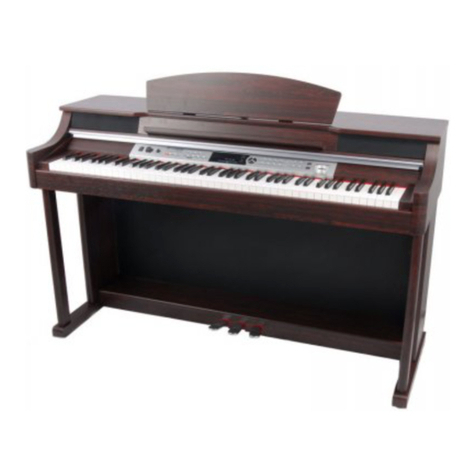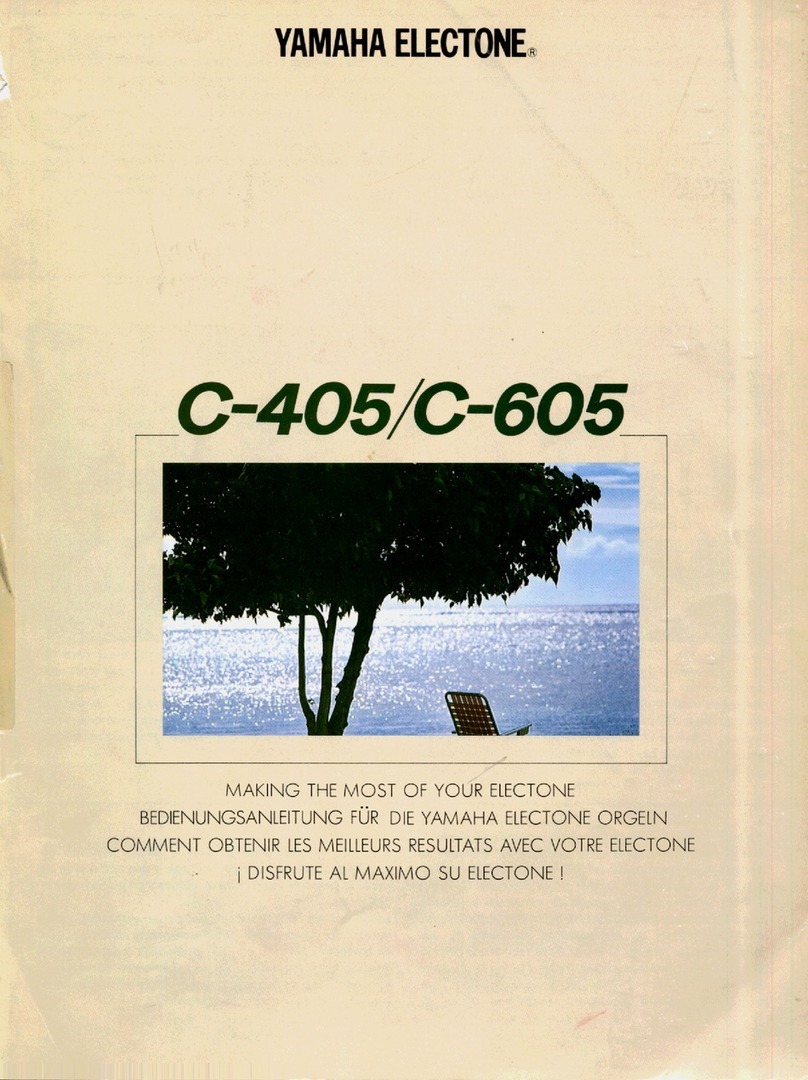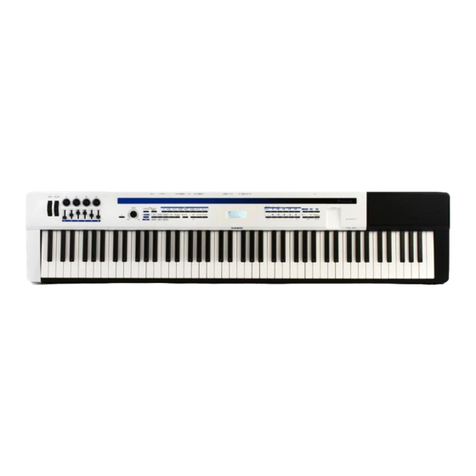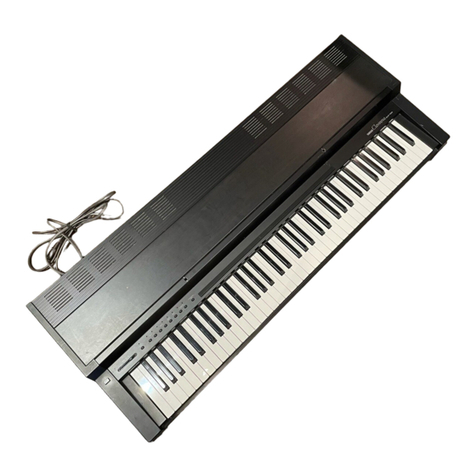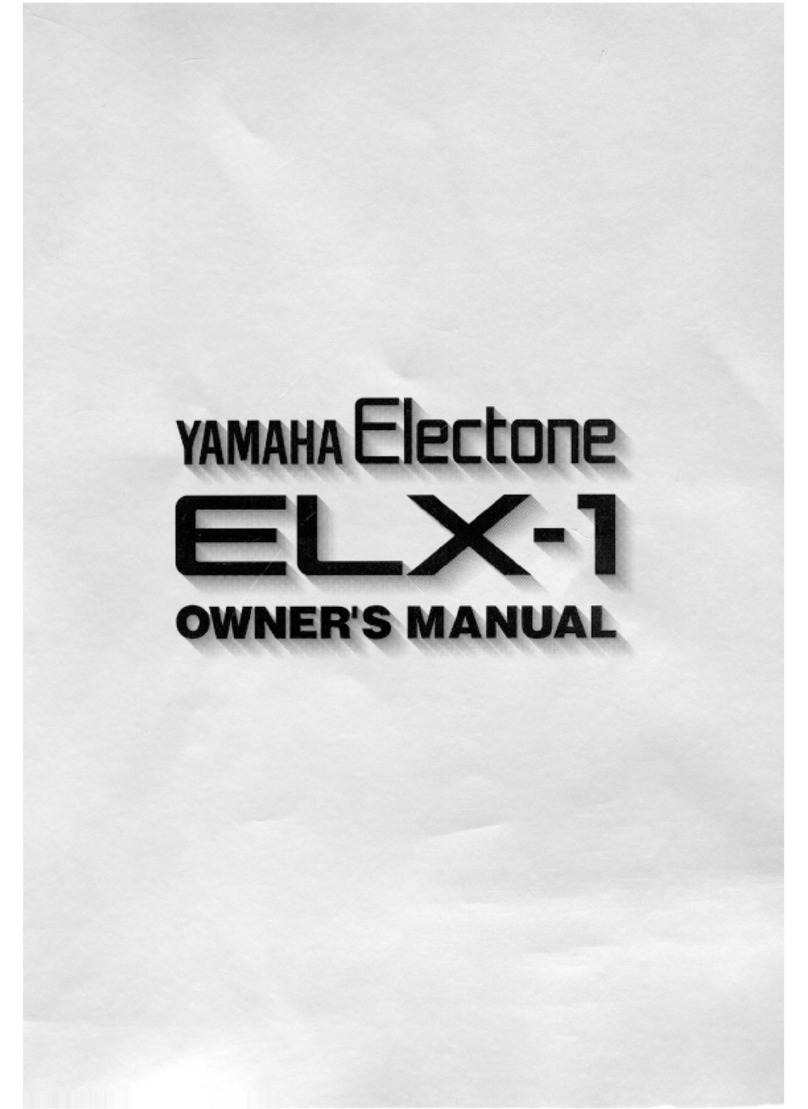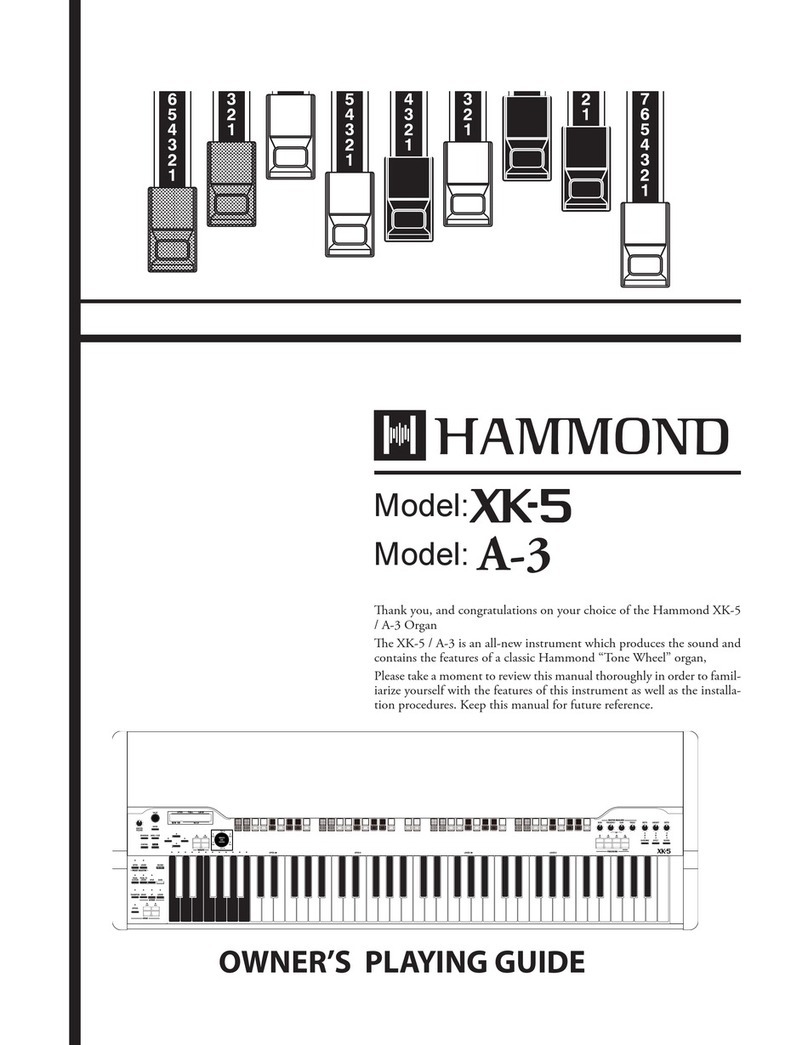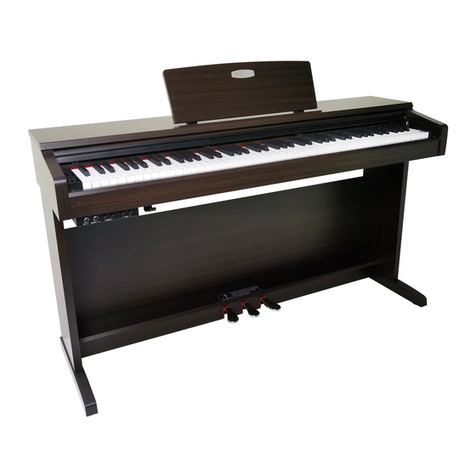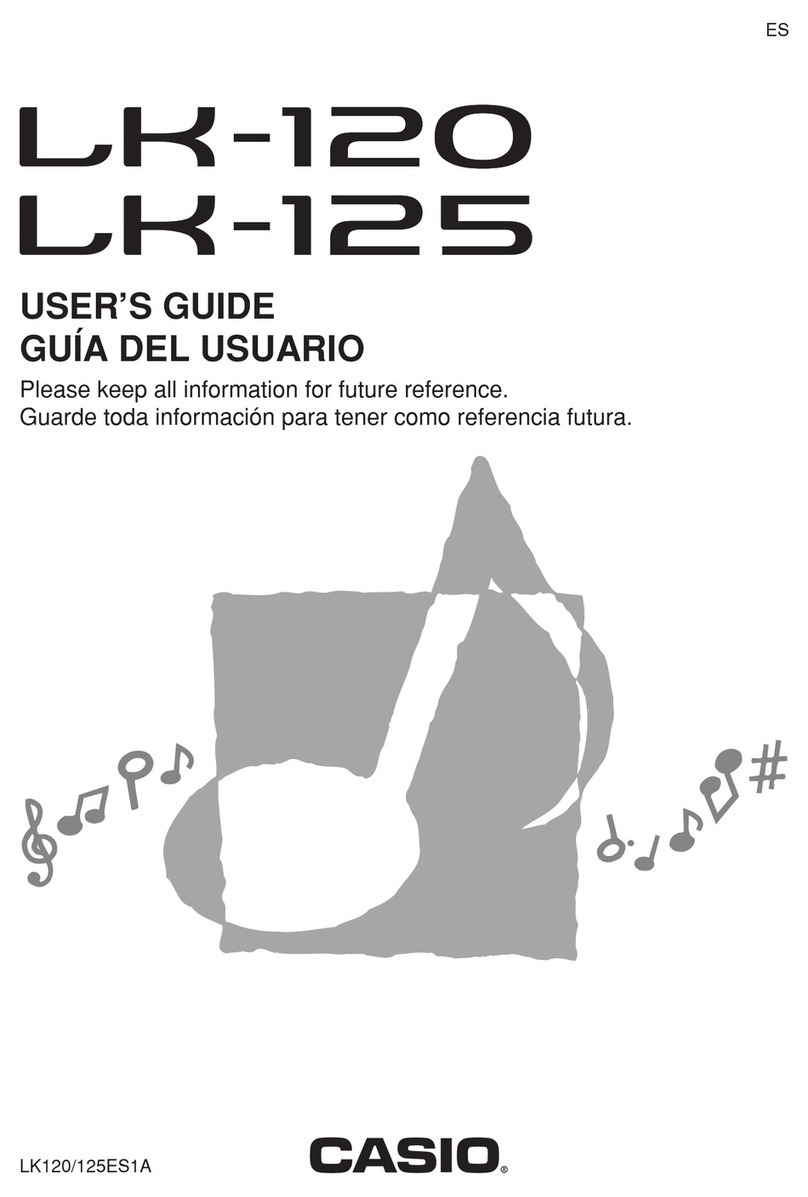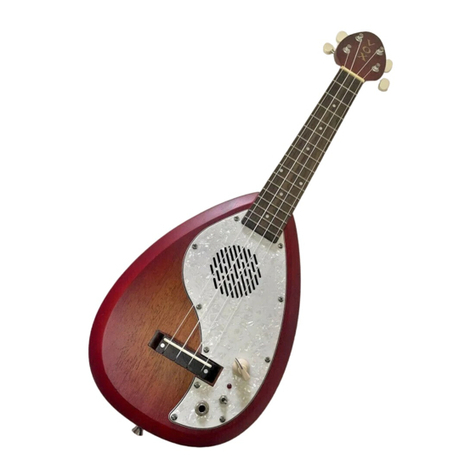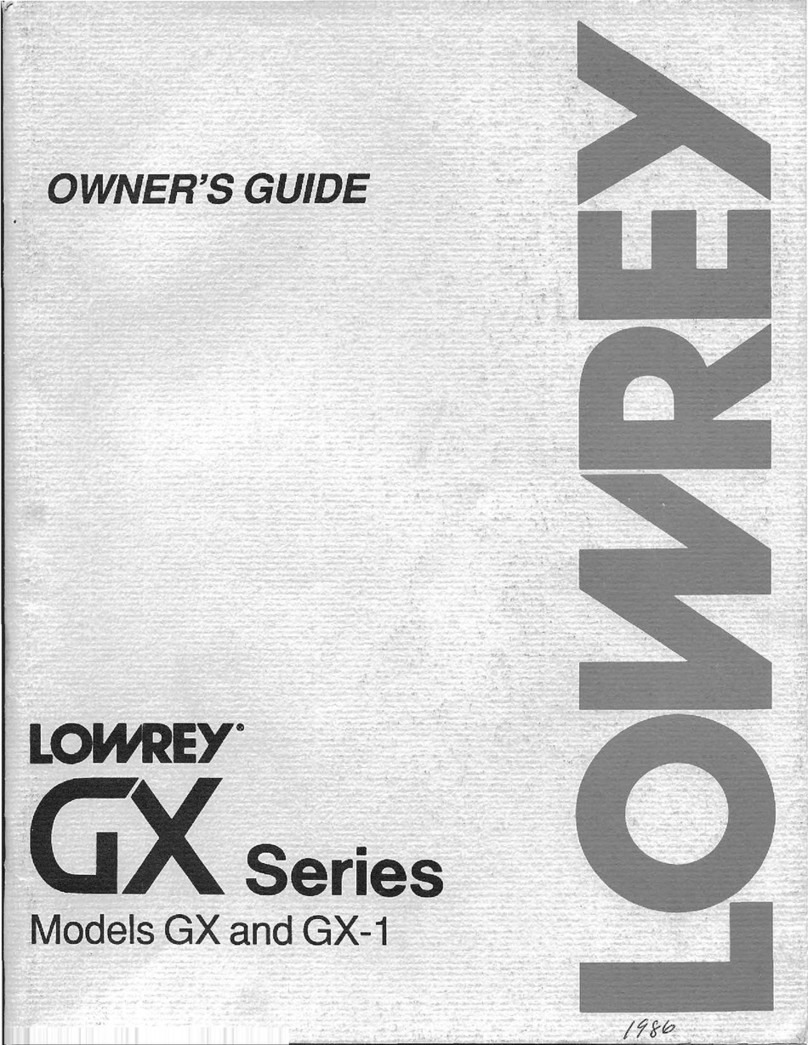Zephyr Trumpet Maintenance manual

Zephyr
band instruments
CARE & MAINTENANCE
Trumpet
zephyrbandinstruments.com
Zephyr Band Instruments –3100 Airway, Suite 119–Costa Mesa, CA 92626 714.429.2391

Care and Maintenance
Trumpet
ACCESSORIES
Valve oil and slide grease are needed to play the trumpet. Its good to have a mouthpiece brush to clean the mouthpiece
and cloth to clean the outside of the trumpet. If the trumpet is silver-plated you'll need a specially treated silver
polishing cloth. A swab or "snake" is also recommended to clean the inside of the instrument.
Valve oil
Valve oil has three purposes: it cleans, lubricates, and it fills air space.
An un-oiled piston will wear faster than a regularly oiled piston. Oil also flushes out any small debris and dirt that gets
in between the valve and walls of the valve casing. A layer of oil will also fill the small gap between the valve and the
casing, reducing any air leakage, making your trumpet more efficient.

OILING THE VALVES -do this about 2 times a week.
Hold your trumpet exactly like would would when
playing it but hold it at a 45 degree angle downward.
Unscrew he top cap and lift the valve only half way out
of the casing. Do not remove it completely.
Put about 5 drops of valve oil on the valve surface.
Spread the oil around by rotating the valve up and down
and around in the casing. Let the valve fall into the
casing all the way down. Turn the valve until you hear a
click, indicating that the valve guide has fallen in the
right space. This aligns the valve with all the ports.
(The valve guide is a small plastic piece located under
the valve spring. This valve guide must snap into a little
notch inside the casing. When it does, the valve will be

perfectly aligned. You will know when the valve guide is
in the right place because you will feel and hear a click
and the valve will not rotate any longer.
GREASING THE SLIDES
do this about once a month
Why do you have to grease the slides you ask.
If you do not lubricate the slides the mineral deposits
from saliva will literally weld the tubes together and you
are looking at an expensive repair and acid bath to
mobilize them again. This is how you get "stuck slides".
Your trumpet dries out and all that remains are the
deposits. You will not be able to remove these deposits
with any soap or water or any cleaning kit. It must be
removed by acid at a professional repair shop.
To avoid all this hassle and expense, all you have to do is
grease the slides. In case you are to lazy to grease the
slides and you feel that you are handy anyway will have
not trouble pulling out the stuck slides with some tools
form the garage, you will be in for an unpleasant
surprise. You will tear your trumpet apart. There is a
chance that you will rip apart all the solder joints. If you
grease your slides regularly they will never get stuck. If
you are lazy or forget and your slides get stuck, take your
trumpet to a trusted repair technician and the clever
repair tech should be able to remove the slides without
any damage. In the worse case scenario some slides get
stuck so bad that the slides themselves have to be
unsoldered and the the individual pieces of slide tubing
have to be removed independently piece by piece.
DON'T FORGET TO GREASE YOUR SLIDES!

How to grease your slides!
(Do this about once a month)
There are two types of slides on your trumpet. We'll refer
to them as the slow slides and fast slides. Slow slides are
designed to move slowly and placed in one position like
your main tuning slide. Fast slides are designed as fine
tuning slides and are designed to move fast to fine tune
your trumpet while playing. You activate them with your
finger so they must be free to move easily and quickly
while you play sweet music. Therefore you grease
anything that is meant to move slowly and oil anything
that is meant to move fast. If you grease anything that is
meant to move fast, you will slow it down. Grease is
thick like molasses and slows everything down. Valve
oil is very thin and has the consistency of water,
therefore it makes everything move fast.
Greasing "slow slides"
Remember these are “slow slides“, so you must grease
them, not oil them. Take the slides out every month and
put a thin coat of grease on the tubes and slide them back
in place. You can buy tuning slide grease at most music
stores for just a few dollars. You can even use Vaseline.
Here is how you grease your slides -Remember you do this to all
the slides with the exception (on some trumpets) of maybe the 1st
and 3rd valve slides, which are designed to be fast moving, so you
put oil on them. Remember?.
Remove the slide -Put a layer of messy and sticky slide
grease on the slide. Spread it around with your fingers.

Yes your fingers will get all greasy. Replace the slide
tube.
With your fingers wipe off any excess grease that
squeezes out after you insert the slide. Use this excess to
put on the next slide. Do the same thing with the next
slide.
Oiling "fast slides"
These are usually the 1st and/or 3rd valve slides. On many trumpets
the 1st and 3rd valve slides are designed to be a fast moving, fine
tuning slide. This is why you have a finger ring on it, so that you can
move it while playing with your finger. On better quality trumpets
these slide are made to move freely and if you want to retain this
function then you do not put grease on it, since grease will sow it
down. Instead you put oil on it. Remember anything you want to
move fast on a trumpet you put oil on it, anything you want to move
slow or leave in a certain position, you put grease on it. So if you
want to retain the quick movement of the 1st and 3rd slides then put a
drop of oil on each slide tube of the 1st and 3rd slides every time you
oil the valves. Always press down on the corresponding valve to
move the slide and when spreading the oil around since there is
vacuum inside the trumpet.
NOTE:
If you are a beginner or have only played for a few years, chances are
you will not be using your 1st and 3rd fast moving, fine-tuning slides.
Therefore, its a good idea if you grease them and just make them into
slow slides, since you are not using their fast slide capabilities
anyway. The choice is yours what you want to do. Sometimes its just

easier to grease every slide the same way.
As long as you oil and grease it regularly, you
will not need to do anything else and your
trumpet will be happy.
Amado Waterkey Maintenance
These days many trumpets have Amado warterkeys instead of the
traditional "spitvalves" (I always thought that was a crude name).
Amado waterkeys are actually small valves that open and close if
pressed on. The tolerances are quite tight inside these gismos and
there is a tiny spring inside of them. So, needless to say, don't take
them apart because you will never find the small parts and even if
you do, you will never be able to put them all back. Mineral deposits
from saliva, just like on any other internal part of your trumpet will
jam or freeze the Amado waterkeys. This is why Amado waterkeys
should never be allowed to dry out. They should always be oiled.
Just put a drop of oil in the actual waterkey hole and around the small
waterkey button. Put another drop on the other side of the Amado
waterkey as well. A total of 3 drops of oil once a month will do the
trick and you will never curse Mr. Amado for his invention. After
oiling each Amado waterkey in these three places, work in the oil by
pressing the button a number of times.
You are probably wondering what type of oil to use. NOT VALVE
OIL. It must by thicker oil. Motor oil is perfect. You can also use
woodwind key oil.
Cleaning your trumpet
CLEANING CLOTH
Wipe the outside of your trumpet after use with a cloth. If you have a silver trumpet use a silver polishing cloth. This
process is very important especially with silver instruments. The acids in your hands can deteriorate finishes. Wiping
the instrument after playing doesn't take much time and will always keep your trumpet looking new.
MOUTHPIECE BRUSH
Using a mouthpiece brush to clean you mouthpiece is a good idea. Food particals from your mouth can collect, enter
the trumpet and eventually work their way to the valves slowing piston action.
TRUMEPT SNAKE
A Trumept snake is made out wire with a brush on the end. Picture what the "Roto Ruter" man uses to unclog pipes -
only much smaller. Every three month you should take off the slides and us the snake. It will help remove mineral
deposits inside walls of the tubing. Not cleaning the tubes could lead the deposits being permanently fused to the inside
of the tubes. If this happens you must have it acid cleaned by a professional. Fused deposits inside your trumpet are like
the hard mineral deposits on your bathroom walls, water alone will not remove mineral deposits, only acid will.
Most of the time if your valves and slides don't function its not due to lack of cleaning but due to mechanical problems

such as worn valves, dented slides, dented or twisted valve casings etc. Remember your trumpet is made of metal but
its soft brass, which bends and dents very easily. There is very close tolerance between the valves and the valve casing
which the valves are inserted into and move inside of. If you get just the slightest dent in the casing your valves will not
be able to move inside. If your valve casing twists the casings go out of round, your valves will jam.
How to Clean Properly
This is the best way to clean valves.
Valve casing brushes are made to clean valves. But here's something cheaper and easier. Go to a Chinese restaurant and
steel a chopstick. Preferably a wooden one. These are absolutely perfect for the job since they have a rectangular
surface on one end where you wrap a piece of cloth on it. Wrap the cloth around the thicker square end of the chopstick
and then fold the cloth over the top.
Insert it into the valve casing, spin it around and move up and down.

Do the same thing from the top. Insert the cloth form the top of the valve casing. After this your valve casing will be
unbelievably clean.
You can also take a cloth and clean the surface of you valves as well. You can even clean in the valve ports in the valve
itself, that's optional.
THE MOUTHPIECE
Be sure to always put your mouthpiece in its proper spot in the case and never in with your trumpet. It will smash up
your instrument if it bounces around in the case.
Never try to remove your mouthpiece if it gets stuck. Take it to a repair shop that has a special tool for this purpose.
The mouthpiece shaft is tapered and so is the leadpipe that the mouthpiece is inserted. When you want to put the
mouthpiece in the leadpipe just drop it in and and easy twist of the mouthpiece will do it. To remove, twist the other
way while pulling out gently.
Don't drop the mouthpiece into the leadpipe and "tap" the mouthpiece with your hand. You will most likely jam the
tapered mouthpiece shaft into the oposite tapered leadpipe. Again -if this happens DO NOT try any remove the
mouthpiece -only a mouthpiece puller is going to do the job.
THE BELL
Never stand your trumpet up on its bell. It will fall over and get damaged. When you are not playing the trumpet, put it
in the case or use a trumpet stand.
Polishing Your Trumpet
Lacquered Instrument
Do not shine the outside of the trumpet using any polish. Did you know that there is a clear coat of lacquer on your
instrument? You will only scratch off this lacquer and destroy the appearance of the instrument. With the lacquer
scratched off, the instrument will tarnish like crazy and it will look awful. Use a polishing cloth designed for lacquered
instruments.

Silver Plated Instruments
Do not use any silver polish on silver plated instruments. Silver polish is an abrasive which is somewhat like
sandpaper. You will wear through the silver plating. You will also get some polish residue left behind in hard to reach
areas and your instruments will look bad. You may also get this polish into your valve casings and then you will be in
trouble.
If you really must shine up your silver trumpet, the best thing to do is buy a silver cleaning cloth. Silver cloths are
inpregnanted with some mild polish called "rouge".
Table of contents
